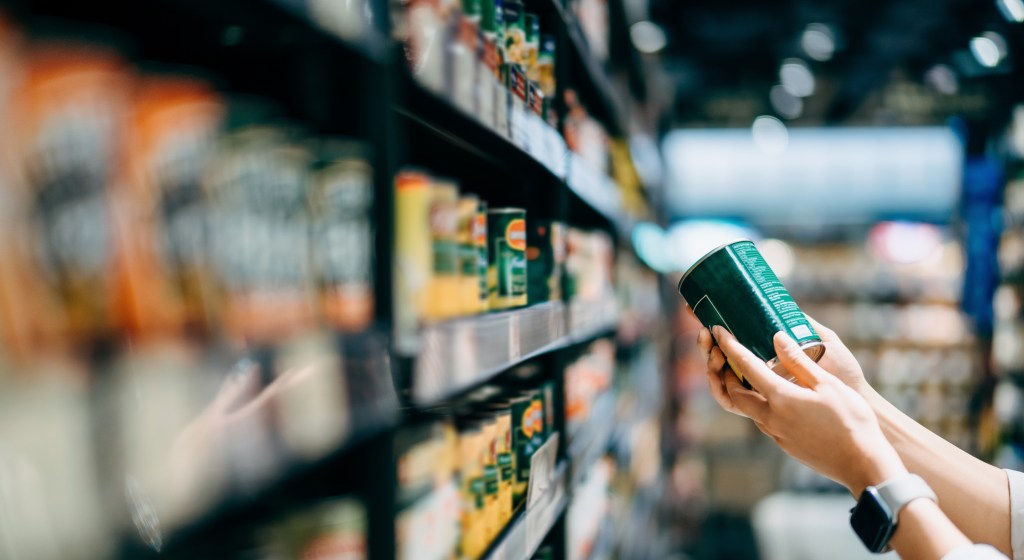Convinced that huge levels of COVID-driven FMCG growth were masking a larger, fundamental change, a team of NielsenIQ data scientists dug into the data to understand the nuances underneath the broader retail data. And they were right. So, we asked the team (Frederic Journe, Remi Adam, Leila Yahiaoui and Brian Sinensky) how they knew something larger was at play, and how they were able to uncover it.
Q: The team uncovered a massive shift in the retail landscape, and it’s happening at the individual store-level. What was the starting point for a project of this scale?
Journe: At the time, FMCG was seeing healthy topline growth, and although there was some movement between channels, it didn’t quite marry up to some of the in-field observations and consumer responses we were seeing. It hinted at something bigger. A larger proportion of consumers reported shopping at different stores than normal, and we knew that some supermarkets in, or near, places like office parks were suddenly very quiet compared to normal. But these observations were being somewhat overlooked by retailers and manufacturers because sales were generally significantly up at a total market level. The team and I felt there was more to the story. We too were shopping in different individual stores compared to pre-COVID, and that helped a lot to conceptualize what we should see in the data and whether it reflected our own changed shopping behavior. With a hypothesis around consumers shopping in different stores, we needed to dive deep into individual store-level sales data. We were not going to answer the hypothesis if we looked at the retail environment using the same lens or metrics that we’d typically use. We needed a different, more granular approach.
Q: Why did it require a different approach? What warranted such a uniquely granular approach to these global datasets?
Journe: The way we usually look at the retail environment for clients during normal periods is to make it as simple as possible to gauge performance. To understand how the total market is moving across hundreds of thousands of stores, so we aggregate it and group similar types of stores together. Usually, this allows for people in the industry to quickly grasp what is going on as there is usually a level of consistency in retailing and very little movement in the importance of individual stores: If, say, the total market is growing by 10%, you would usually see a small range of growth and decline within the universe of stores. Most stores fall within the range of -5 to +20% of sales movement, for instance. But what we have seen in this latest data exploration is markedly different. Here we have seen that some stores are declining by -50% and others are growing above 50%. The retail environment is performing in an abnormal way at the moment where there’s substantial and noteworthy variations from store to store.
Q: Based on what you’ve described, there’s a huge hidden trend behind analysis at the channel level alone. Could you explain what might be missing from this fuller picture?
Journe: What we saw in the data was that two similar types of stores may be performing in completely opposite ways when compared to pre-COVID sales trends. For example: Two convenience stores of the same size, with the same retail banner, with similar sales levels, are now frequently diverging from those norms. In fact, their sales trends may look like polar opposites. These two stores are not equal anymore, and that is why we needed to look at an individual store-level to identify the scale of movement. If we just look at an aggregated level, these two stores would cancel each other out…the fragmented performance would be hidden.
Q: Once you had the data identified, what steps were necessary to be able to scale this approach across the globe? Leila, you were responsible for coordinating the collection and processing, so maybe you can speak to this?
Yahiaoui: Of course: Each market is different. There are various channel nuances, definitions, and inputs. We had to ensure we collected the data in consistent ways to compare across markets without losing those local specifics. With any analysis across markets, there are concerns regarding consistent and clean data. But with store-level analysis, it expanded the potential data volatility considerably. Analyzing this detailed information at a monthly level proved to be a key success factor, allowing us to isolate shifted behavior from the impact of seasonal or lock-down driven demand. This enabled us to build a very focused set of data that let us interrogate it in multiple, yet consistent ways, across markets.The sales for individual months was one area that proved to be very important as we started asking if the shifts in sales were just associated with periods where there were official lockdowns, or if they continued outside of those periods of restricted movement. Early on, we were quickly able to determine that the sales continued to drift to lower density areas outside of lockdown periods.
Q: Were there any key challenges with handling this large volume of data?
Yahiaoui: We are used to processing and examining this amount of data, and we set up checks and balances to make sure that the data always reconciled back to the base data. The amount of data wasn’t a challenge, but the differences in what the data was telling us required regular back and forth with the local teams to confirm that it aligned with what was happening in the marketplace. There were a lot of learnings about the dynamics across the 15 markets we were ultimately able to reflect in our findings.
Q: Brian, you supported a workstream looking at the U.S data. At what point did you start to see patterns emerging?
Sinensky: We knew we were onto something almost immediately. We ran a store-level view across selected cities and the spread of growth—and decline—was huge. It was also incredibly varied in nature, something you typically wouldn’t see. So we started doing some simple ranking change analysis and observed some stores were jumping up as much as a thousand places, while others were dropping at the same rate. That’s when we started looking forward to receiving the next batch of data because we were curious if the numbers would be just as extreme in other countries.
Q: How was this project different from your everyday projects?
Sinensky: We usually do not do analysis like this across so many markets all at once, so the scale was a bit different. But we were encouraged to explore different angles and bring other data sets into our thinking, which made it an incredibly dynamic and creative process. We’re not just number-crunchers!
Q: How was this project different from your everyday projects?
Sinensky: We usually do not do analysis like this across so many markets all at once, so the scale was a bit different. But we were encouraged to explore different angles and bring other data sets into our thinking, which made it an incredibly dynamic and creative process. We’re not just number-crunchers!
Q: Can you speak to that a bit more? What did the more non-traditional elements entail?
Sinensky: In the U.S., we were looking at store universes across major cities and saw some suburbs that were growing significantly and others declining in total sales. Questions immediately began to emerge for us. With team members residing in many of the cities, we knew from personal experience that the areas in decline were usually the busiest, most commercial—often downtown areas. That drove us to integrate measures of population density for those areas. This exercise confirmed our thinking that it was the highest density postal codes and areas that were suffering. It made sense. People had stopped, or slowed, commuting habits and travel for other activities. They had entirely shifted where they spent their dollars in a matter of months…we’d never seen this scale or speed of change.
Q: So how were you able to show areas where retail sales were growing and declining?
Sinensky: Through store location on the map and plotting the sales growth and decline vs. the same period last year. The objective was to make decisions around how to group stores in the analysis that enabled us to deliver a clear, consistent narrative across the work. As a consequence, the results are so consistent and compelling that it clearly shows the impact of the changed movements as people go out less often, go to offices less often, and shop in stores closer to home. Grocery sales are migrating away from central high-density areas and toward where people are living.
Q: Remi, you created the heat maps that show these dynamics at play in cities around the world. Did you have a similar experience?
Adam: Yes, it was similar in the sense that we overlaid things like locations of tourist hotspots, office parks and transport hubs to help explain why we were seeing areas that were declining in sales. As a general rule, we were seeing that sales were drifting from the center of cities to the suburbs and beyond but sometimes we would see these patches of red (declining sales), representing decline in the outer areas. Once we plotted out data that reflected actual activity or movement of people, we could see that it started to correspond with sales and ultimately explain why we were seeing the decline. That really made us confident in our hypothesis—that just by looking at a red spot on a map representing sales decline, we consistently find they correlated with things like office park locations.
Q: And that’s a different approach to what you have done in the past?
Adam: No, we have often mapped locations such as transport hubs or recreation centers to help identify potential areas for retailers in the past. But this is the first time we have been able to get a sense of how important it has been to be in the right location at given moments in time where spending patterns are influenced by larger factors; in this case, the impact of COVID-19.
Q: Brian, what made this sort of work possible?
Sinensky: At the end of the day, it came down to an ability to access this rich data, make sense of it, give it context and and use industry knowledge to address the implications of our findings.
We worked across many areas of the business and were involved from the VERY beginning. We worked with the NielsenIQ Intelligence Unit on an almost daily basis to walk through where we were at and we continually had to check in with local teams, so the open communication channels were essential. I think that there was a sense that we were on to something quite revealing that made everyone very responsive, and the collaboration we received was extraordinary.
Q: What has been a key takeaway from this project?
Journe: The power of data to identify these big changes going on. It’s been interesting to see the reactions to this work from people and especially clients who felt something like this was going on, but didn’t grasp the scale or the importance because they were just looking at the topline numbers and direction. They were seeing things like changes in their market share, and couldn’t put their finger on what was happening. The data clearly tells the story, and they now understand the implications. It’s powerful.
Sinensky: For me, it reinforced the need to continually try innovative ways to use data to gain insight and look at things in new ways. We often use data to measure and recognize change but this project was a great reminder that it lets you understand WHY change is happening—what’s driving the change. For our clients, and for us as a business, this was just a great example of how you can make data work incredibly hard.




